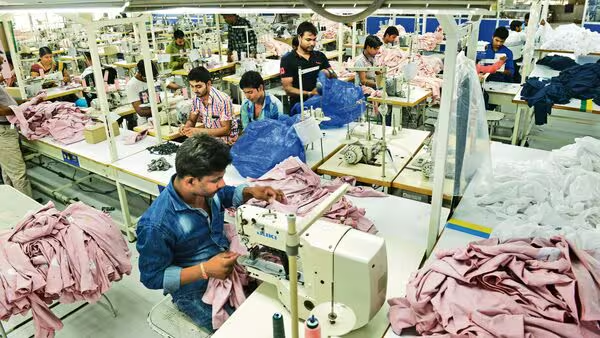Share

- According to iSPRIT, the goal of PLSAI is to ensure that credit to micro, small, and medium enterprises (MSMEs) can double to ₹130 trillion over next 3-5 years. According to RBI norms, banks are required to maintain at least 40% of their adjusted net bank credit as priority sector loans.
- India’s non-bank lenders are coming together to set up a first-of-its-kind industry body for priority sector lending.
- The Priority Sector Lenders Association of India (PSLAI) as it is called has been set up under the aegis of Indian Software Product Industry Round Table (iSPIRT), a non-profit think tank, to solve the issue of credit shortfall to small businesses.
- Lenders like UGRO Capital, IIFL, fintechs like GetAdvantge have already joined as founding members. iSPRIT is in talks with Small Industries Development Bank of India (SIDBI) and large banks like State Bank of India to join the association, Sharad Sharma, co-founder, iSPIRT, said.
- “The focus of PSLAI will be on initiating conversation on liberalized risk weightage on PSL portfolios, mitigating perceived risks through digital public infrastructure (DPI) and establishing fair practices within the industry. It will advocate for policy reforms which will further strengthen the borrower ecosystem, particularly for MSMEs,” said Sharma.
- The new association will be inaugurated on Monday.
- The Reserve Bank of India, through its priority sector lending program, ensures that banks extend credit to the vulnerable groups and underdeveloped segments of the economy. This includes farm, education, MSME and housing loans.
- According to iSPRIT, the goal of PLSAI is to ensure that credit to micro, small, and medium enterprises (MSMEs) can double to ₹130 trillion over next 3-5 years. To reach this, the think-tank has laid down 4 strategies, which include classification of PSL lenders as a new NBFC category NBFC-PSL, to enable a shift from collateral-based to cash flow-based lending with the help of technology like Open Credit Enablement Network (OCEN), seek Government support to boost credit flow to the sector in the form of credit guarantee scheme and increase credit worthiness for MSMEs.
According to RBI norms, banks are required to maintain at least 40% of their adjusted net bank credit (ANDC) as priority sector loans. Within this, credit to the agricultural sector accounts for the largest share. Currently, only 25% of the MSME financing needs are met though lenders, resulting in a credit gap of ₹103 trillion as of FY24.
Strategies to bridge credit shortfall:
According to Shachindra Nath, MD & CEO of UGRO Capital, many MSMEs have been facing a credit shortfall after July 2021 when the Government allowed wholesale and retail traders as MSMEs.
“If you go and talk to a bank in India today, they will say MSME financing is not an issue. Every shopkeeper can get an Udyam certificate and become a priority sector borrower. Bank’s 7.5% PSL requirement for MSME gets completely filled up,” said Nath. “Once we were able to establish that, technically, any lending from a bank to such an entity which is tagged as NBFC PSL or licensed as NBFC PSL can come at a lower rate and can also be part of banks’ priority sector lending,” he added.
Sharma believes that this is the best time to look into the MSME lending because of the emergence of new digital infrastructure like Open Credit Enablement Network.
“A new type of a data infrastructure through the account aggregator has come in and a new type of a digital infrastructure called OCEN is in place. We are also making good progress on e-liens. This help lock in cash flows that are needed to make sure repayments happen on time. Given all this, we are at a point where the critical building blocks for large-scale cash flow lending are ready. Now, market players, policymakers, public technologists have to make one small push to take MSME lending over the hump,” said Sharma.
RBI Deputy Governor, J. Swaminathan in a speech last year said that MSMEs can strengthen their financial health and credibility by embracing formal registration, maintaining accurate financial records and adopting digital payment systems to create a transparent financial footprint.
Source : https://www.livemint.com/industry/nonbank-lenders-form-priority-sector-lenders-body-to-plug-msme-loan-shortfall-11737258406560.html#:~:text=The%20Priority%20Sector%20Lenders%20Association,credit%20shortfall%20to%20small%20businesses.
Related Posts
SEARCH SMECONNECT-DESK
RECENT POST
- The challenges facing SMEs
- How to Overcome Common Challenges in Export Finance?
- INTERACTIVE MEETING WITH Chairman & Managing Director Larsen & Toubro Limited
- Shri Chandrakant Salunkhe Recognized for Transforming the SME & Manufacturing Landscape at Udyog Sammelan organised by ZEE media
- India’s finished steel imports from China hit 7-year high in April-Dec



